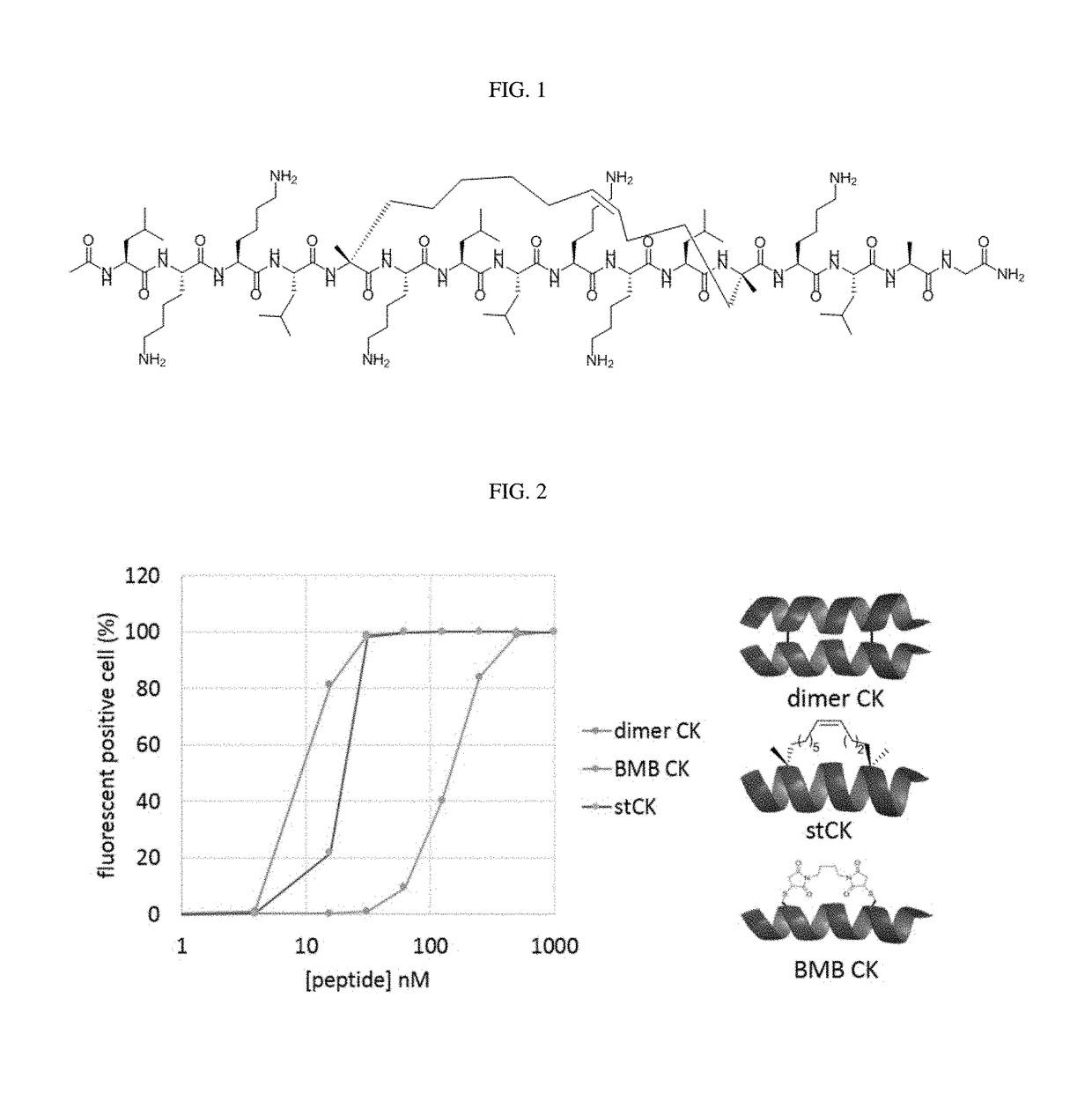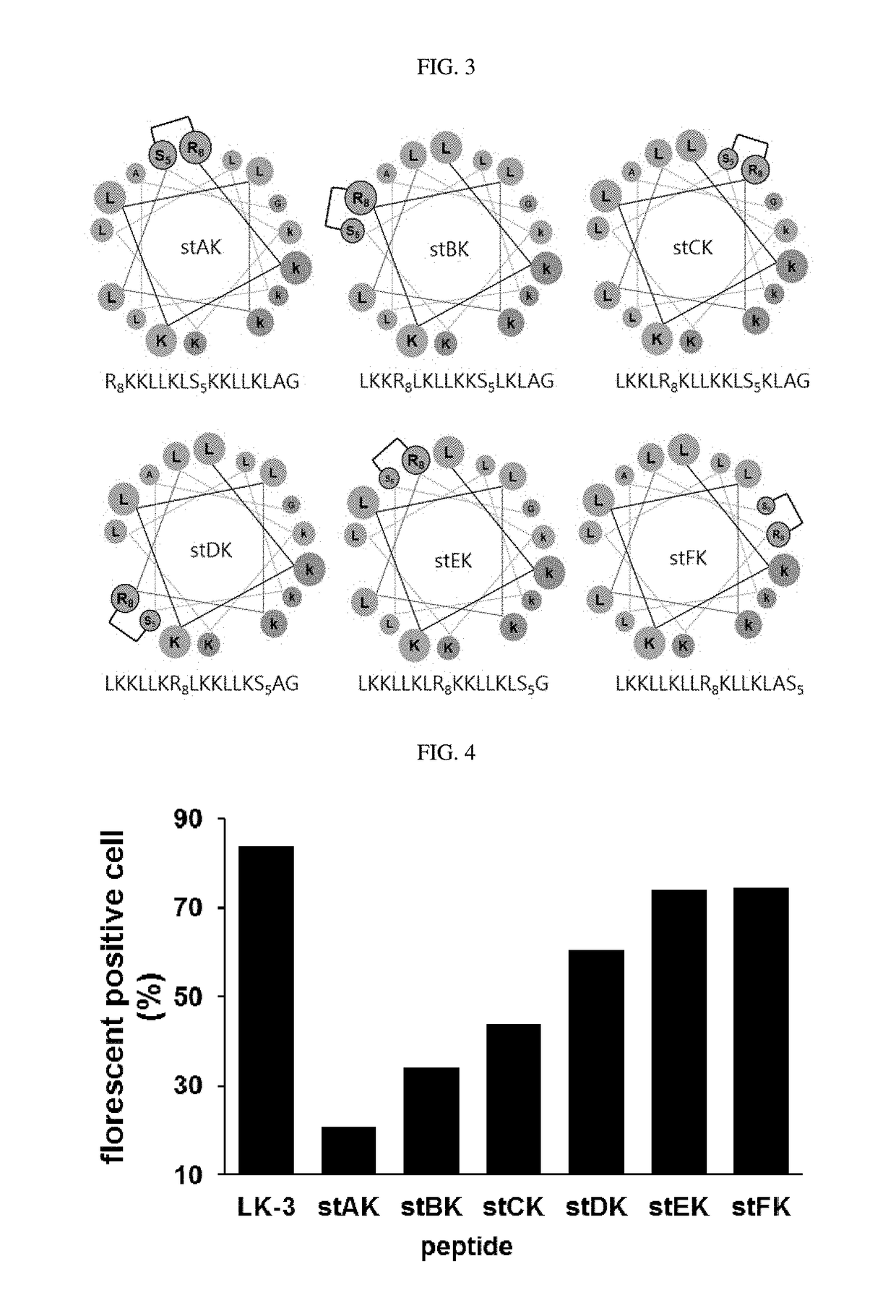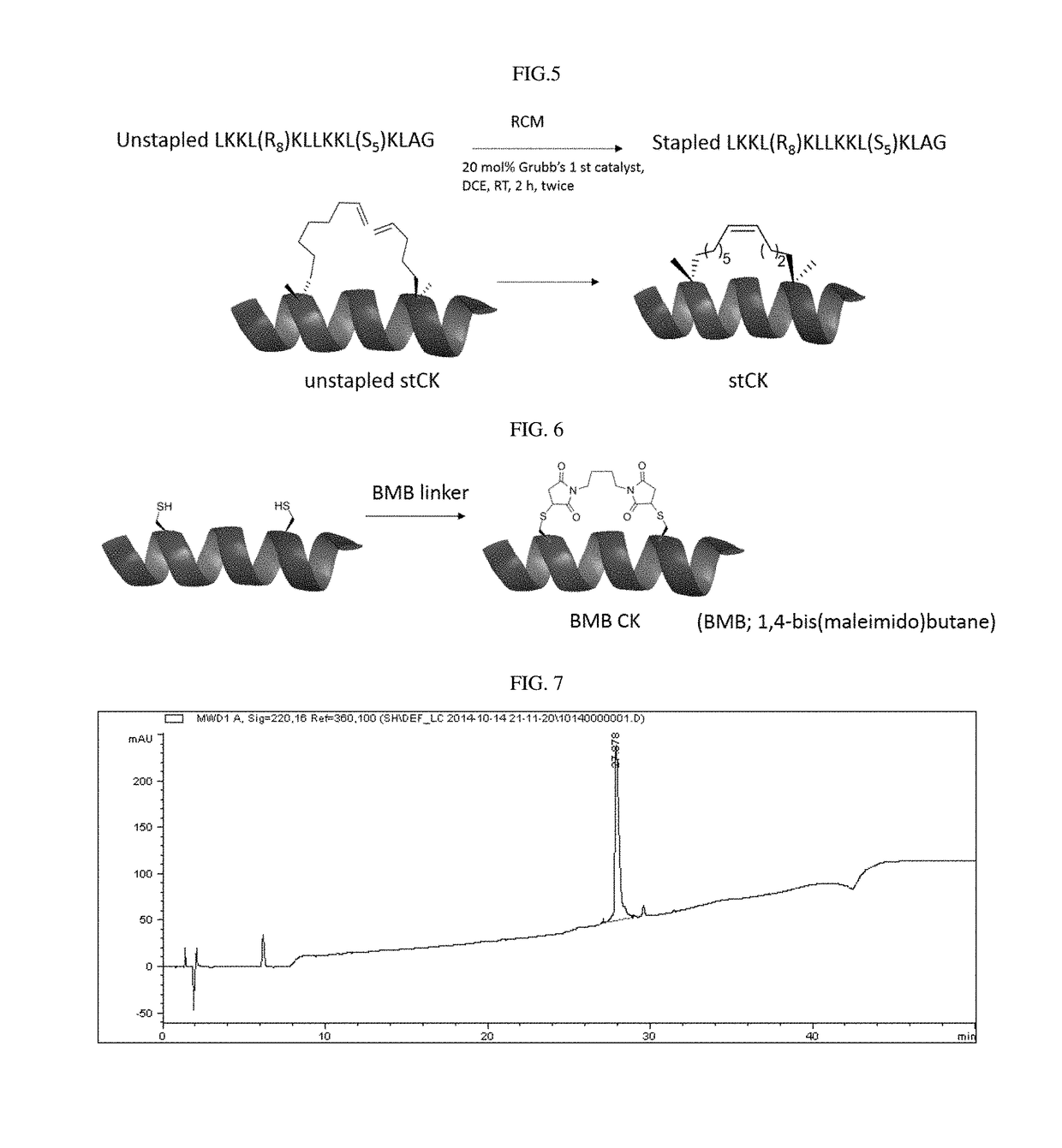Cell penetrating stapled peptide, manufacturing method therefor, and use thereof
a technology of stapled peptides and cells, applied in the field of stapled peptides, can solve the problems of insufficient efficiency of peptides, and achieve the effect of efficient penetration of cells
- Summary
- Abstract
- Description
- Claims
- Application Information
AI Technical Summary
Benefits of technology
Problems solved by technology
Method used
Image
Examples
example 1
Preparation of Stapled Peptides
[0054]From the hydrophobic amino acids of an alpha-helical peptide consisting of leucine and lysine residues, two amino acids at the i and i+7 positions were selected. The amino acid at the i position was substituted with (R)-2-(7′-octenyl)alanine, and the amino acid at the i+7 position was substituted with (S)-2-(4′-pentenyl)alanine, and ring closure metathesis was performed, thereby preparing hydrocarbon stapled peptides (FIG. 3). Table 1 below shows the amino acid sequence and name of each of the prepared peptides.
TABLE 1NameSequencesaSEQ ID NOs:stAKR8KKLLKLS5KKLLKLAG1stBKLKKR8LKLLKKS5LKLAG2stCKLKKLR8KLLKKLS5KLAG3stDKLKKLLKR8LKKLLKS5AG4stEKLKKLLKLR8KKLLKLS5G5stFKLKKLLKLLR8KLLKLAS56LKH stEKLKHLLHLR8KHLLKLS5G7Cys stEKCLKKLLKLR8KKLLKLS5G8
[0055]aR8: (R)-2-(7′-octenyl)alanine; S5: (S)-2-(4′-pentenyl)alanine; the peptides of SEQ ID NOs: 1 to 7 contain amide at the C-terminus and acetyl at the N-terminus; the peptide of SEQ ID NO: 8 contains amide at the C...
example 2
Analysis of Cell-Penetrating Ability by FACS
[0059]Each of five 5-TAMRA-labeled stapled peptides, an amphipathic alpha-helical dimeric peptide (dimer CK) obtained in the previous patent, and a peptide comprising a BMB linker (BMB CK), was incubated with HeLa cells (the human cervical cancer cell line) at each concentration. In the results of the fluorescence activated cell sorting (FACS) experiment (FIGS. 2 and 4), the percentage of the fluorescent positive cells indicate that the cell-penetrating ability at all the concentrations used in the analysis increased in the order (FIG. 2: BMB CK<stCK<dimer CK).
[0060]The stapled peptide (e.g., stCK) was labeled with the fluorescent dye 5-tetramethylrhodamine (5-TAMRA) and the cell-penetrating ability thereof was measured. As a result, it was shown that 90% or more of the cells contained the peptide at about 30 nM (FIG. 2).
[0061]For the amphipathic alpha-helical dimeric peptide (dimer CK) as described in PCT / KR2014 / 009778, it was shown that ...
example 3
Examination of siRNA Delivery Effect Using Fluorescence Microscope
[0064]HeLa cells (5×104 cells / well) were grown on a 8-well Lab-tek chamber slide (Thermo Scientific). On the next day, the cells were transfected under the following conditions. siRNA (siGLO, GE life sciences) labeled with DY-547 was incubated with the stapled peptide stEK in PBS buffer at room temperature for 30 minutes, and then incubated with the cells in OptiMEM medium for 24 hours, followed by washing twice with PBS buffer. Next, the cells were imaged with a fluorescence microscope (Confocal LSM 710 system, Zeiss) and a fluorescence filter at a desired wavelength. As a result, it could be seen that, even when stEK and siRNA were mixed at a molar ratio of 2:1 or 10:1, delivery of the siRNA was efficiently achieved, like the case of Dharmafect I reagent used as a positive control.
PUM
| Property | Measurement | Unit |
|---|---|---|
| Fraction | aaaaa | aaaaa |
| Molecular weight | aaaaa | aaaaa |
| Molar ratio | aaaaa | aaaaa |
Abstract
Description
Claims
Application Information
 Login to View More
Login to View More - R&D
- Intellectual Property
- Life Sciences
- Materials
- Tech Scout
- Unparalleled Data Quality
- Higher Quality Content
- 60% Fewer Hallucinations
Browse by: Latest US Patents, China's latest patents, Technical Efficacy Thesaurus, Application Domain, Technology Topic, Popular Technical Reports.
© 2025 PatSnap. All rights reserved.Legal|Privacy policy|Modern Slavery Act Transparency Statement|Sitemap|About US| Contact US: help@patsnap.com



